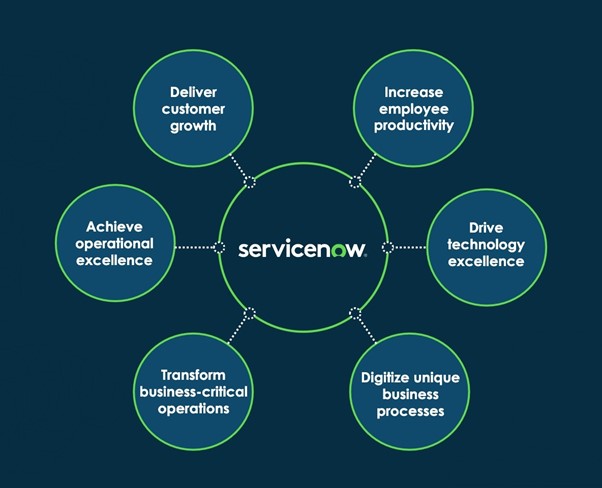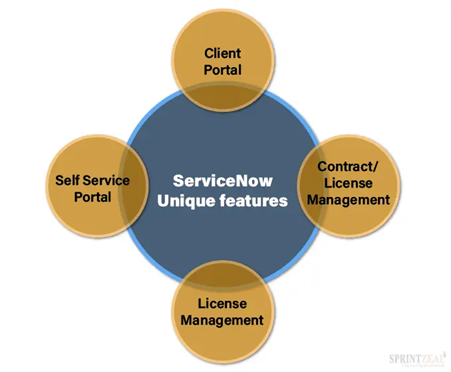Evaluation of ServiceNow (SNOW) Ticketing System
1. Introduction
This report aims to evaluate the viability of the ServiceNow (SNOW) ticketing system for our team project. This evaluation includes an in-depth analysis of ServiceNow’s features, a comparative analysis with Redmine, a detailed integration strategy with our existing system, and user feedback and case studies. The final section provides a recommendation based on the findings.

2. Features of ServiceNow
ServiceNow (SNOW) is a leading IT service management (ITSM) platform that offers a range of features designed to improve IT operations. Key features include:
- Incident and Problem Management: ServiceNow automates the identification, logging, categorization, prioritization, and resolution of incidents and problems. AI is used to predict incidents before they occur and provides root cause analysis.
- Service Catalog and Self-Service Portal: Centralized repository for services that allows users to browse and request services efficiently. Self-Service Portal empowers users to submit and track tickets.
- Automated Workflows and AI Integration: Workflow automation streamlines repetitive tasks, allowing IT personnel to focus on more complex issues. AI-driven automation handles tasks like ticket routing and escalation.
3. Comparison with its competitors
ServiceNow is compared with its competitors, Synergy and Zendesk:
-
Integration Capabilities:
- ServiceNow: Extensive integration capabilities through REST APIs, allowing connections with third-party apps and services.
- Synergy: Offers solid integration options but may require middleware for complex systems.
- Zendesk: Strong integration with customer support and CRM but limited in broader IT contexts.
-
Customization Options:
- ServiceNow: Robust customization enabling tailored workflows, user interfaces, and reporting.
- Synergy: Offers reasonable customization, though less flexible compared to ServiceNow.
- Zendesk: Focuses on customer support, less customization for IT service management.
-
Scalability and Performance:
- ServiceNow: Optimized for large-scale environments, offering strong scalability and performance.
- Synergy: Suited for SMEs, performance issues may arise in large environments.
- Zendesk: Scales well for customer support, but its performance in IT contexts may not match ServiceNow.
4. Integration with Our System
Steps for Integration:
- Comprehensive Infrastructure Assessment: Identify current IT components and evaluate their compatibility with ServiceNow.
- Integration Points Identification: Map data flow between ServiceNow and other applications.
- Challenges and Requirements Analysis: Address challenges like data inconsistencies, security concerns, and user adoption resistance.
- Integration Plan Development: Define scope, objectives, and limitations.
- Resource Allocation: Assign personnel, budget, and technical assets.
- Risk Assessment and Mitigation: Identify potential risks and develop strategies to mitigate them.

5. User Feedback and Case Studies
User Feedback:
- Positive: Extensive functionality, particularly incident management and automation. AI-driven insights enhance operational efficiency.
- Negative: Complex initial setup and steep learning curve. High cost may be a concern for smaller organizations.
Case Studies:
- Company A: Reduced incident resolution time by 40% using AI-driven automation.
- Company B: Improved change management processes, minimizing downtime.
- Company C: Enhanced self-service options, resulting in a 30% decrease in support tickets.
6. Recommendation
Based on the evaluation, ServiceNow is recommended as a robust and scalable ticketing system. While the initial setup and user interface present challenges, these can be mitigated through planning, training, and customization.
Final Rating: 8.5/10
- Breakdown of the Final Rating:
- Features (Incident management, AI-driven automation): 3.0
- Scalability and customization: 2.5
- User experience: 1.5
- Cost: 1.0
- User feedback and case studies: 0.5
7. Conclusion
ServiceNow offers a comprehensive suite of features that can significantly enhance IT service management processes. The long-term benefits in terms of efficiency and automation outweigh the challenges. Proper planning, configuration, and user training are recommended to maximize its potential.
ServiceNow Official Documentation
Link to Guide
References
- Brown, M. (2022). Case Study: Improving Incident Resolution with ServiceNow. Retrieved from ServiceNow Customers.
- Davis, K. (2023). Case Study: Streamlining Change Management with ServiceNow. Retrieved from ServiceNow Customers.
- Johnson, A. (2023). User Reviews of ServiceNow. Retrieved from G2 Reviews.
- Smith, J. (2022). Comprehensive IT Service Management Solution. Retrieved from ServiceNow Docs.
- Thompson, L. (2023). ServiceNow: Enhancing IT Operations with AI and Automation. Retrieved from Capterra.
- Wilson, P. (2023). Case Study: Enhancing Self-Service with ServiceNow Knowledge Management. Retrieved from ServiceNow Customers.